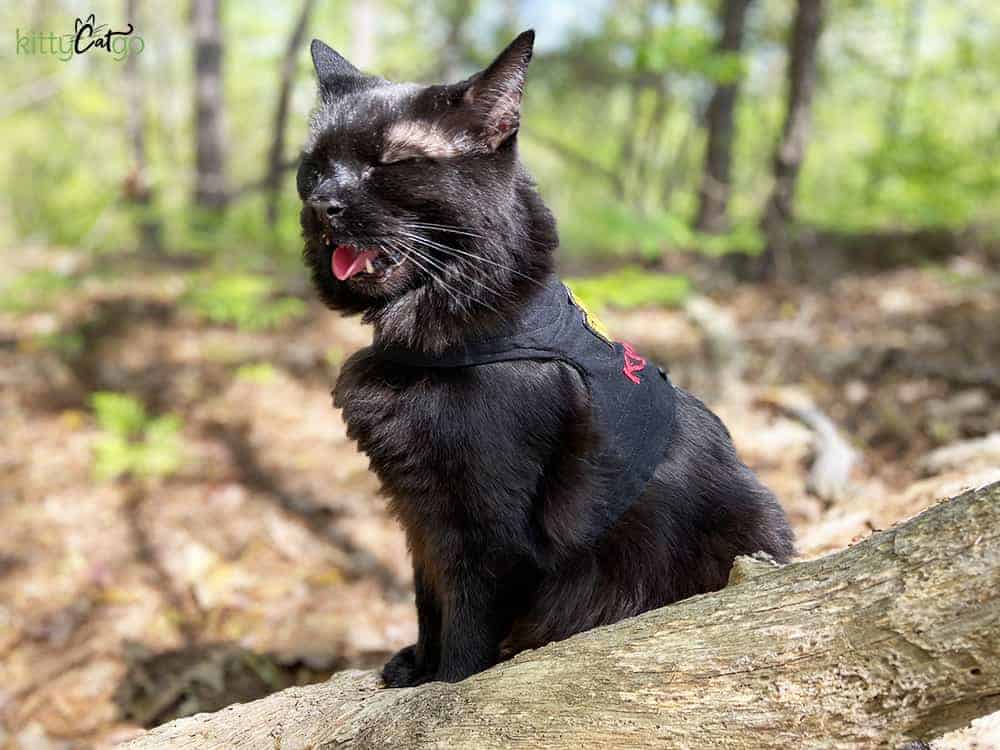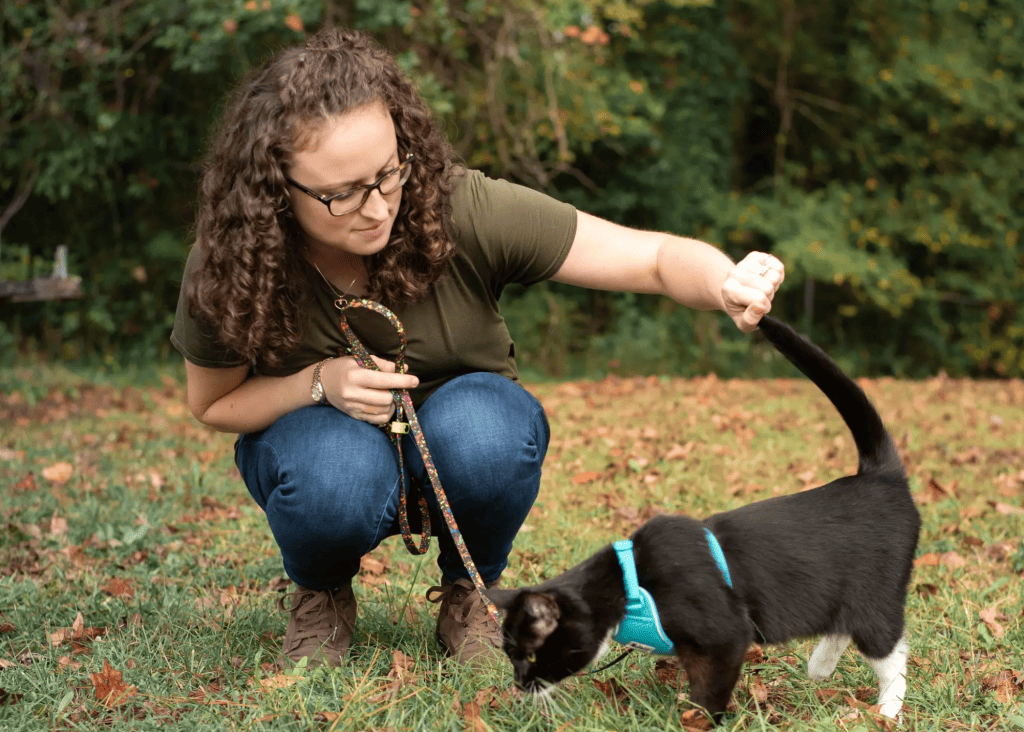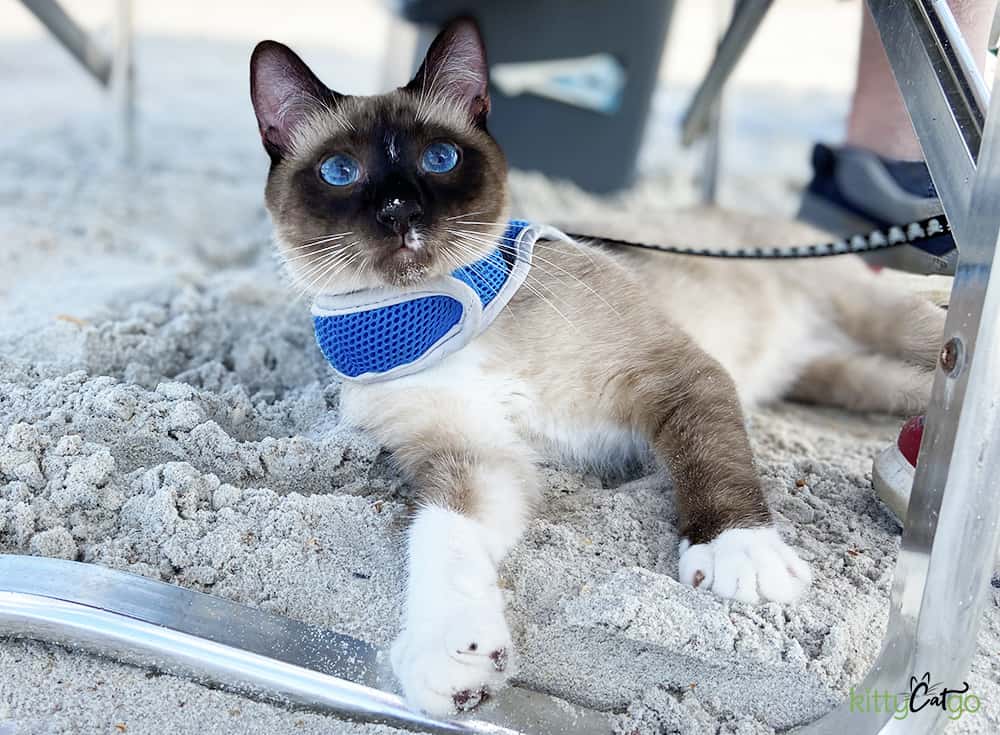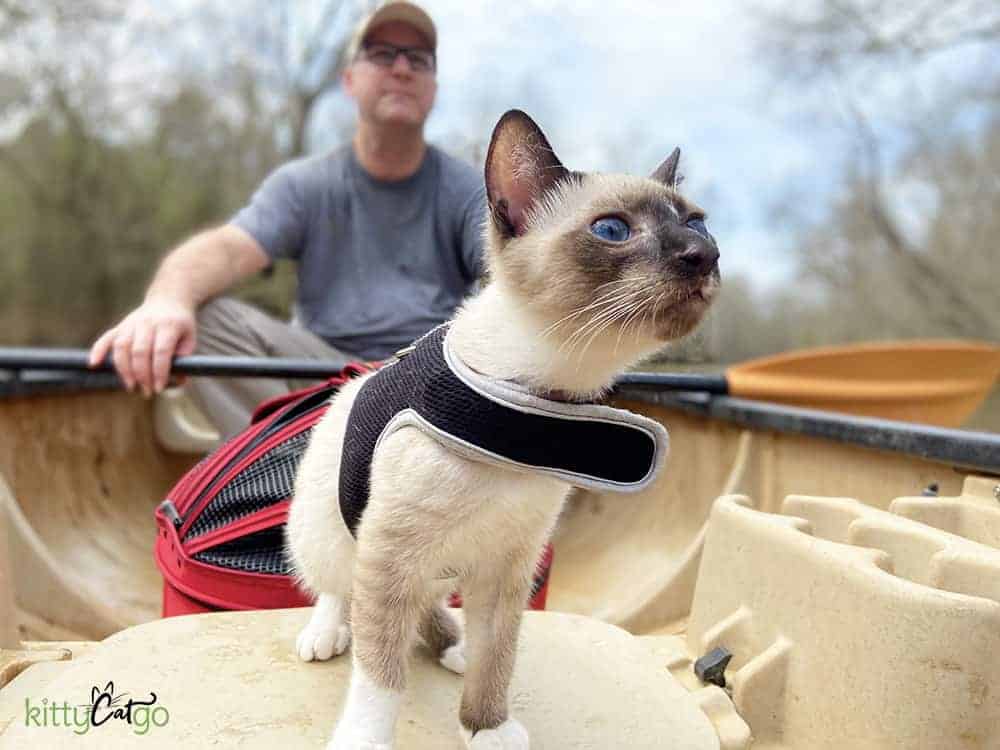The hot weather is here, and you’re wondering, “How do cats cool down if they get too hot?” “Do cats sweat?” “Do cats pant?” If you plan to adventure outdoors with your cat during the summer months, it’s important to know the answers to these questions, to understand how they regulate their body temperatures, and to recognize signs of overheating in cats.
You may have glanced down at your cat when on a summer hike and noticed they aren’t sweating (or don’t appear to be, at least). Looks can be deceiving though. Though your cat might not become a sweaty mess in the heat like we humans do, they can and do overheat if not given the chance to cool down.
Today we are going to dive in and answer some commonly asked questions regarding cats and overheating. The more we understand about how their bodies work, the safer our outdoor adventures will be!

*Disclosure: This post contains affiliate links. If you make a purchase using one of these links, I will receive a small commission at no extra cost to you. This helps me to continue creating helpful content. Don’t worry – I would never recommend something I don’t like or use myself!
Do cats sweat?
Though cats may not get all sweaty and gross looking like we humans do, they do indeed sweat. I spoke with veterinarian, Dr. Butler Caldwell, to get the full explanation of how cats’ sweat glands work.
According to Dr. Caldwell, cat sweat glands are located on their footpads as well as throughout their skin. However, they are much less active than in humans. “There are less of them, they are less innervated, and the accompanying blood vessels are built a bit differently, so they lack much of the ability to thermoregulate with the skin/sweating,” he says.
So can cats sweat? Yes, but their sweat glands don’t work as effectively as in humans.
If you notice little, wet, kitty footprints on the ground while exploring, don’t worry – your cat is just sweating. But because sweating alone is not enough to cool your cat down if they get really overheated, it’s important to keep an eye on them while adventuring outdoors during the summer. They may need your help to sufficiently cool down.
*As a side note, Dr. Caldwell also mentioned that “hyperhidrosis (abnormally increased sweating) has been reported in cats and is often related to an allergic response or stress.” He says he’ll occasionally see a cute set of sweaty paw prints when a cat jumps off of a chair in the exam room.

Is your cat meant for a life of adventure?
Take the interactive cat personality quiz to find out!
Do cats pant?
While cats do sometimes pant, it is not as common of a thing to do as it is for dogs. Panting can help cool your cat down, but it is typically a sign that your cat is overheated or stressed (or has an underlying health issue). If you notice your cat panting while out on an adventure, you should stop and take a break.

So… how do cats cool themselves down?
If sweating doesn’t do much for them, and if panting isn’t typical, then what do they do? When cats get hot, they will sometimes bathe themselves. Similarly to sweat, their saliva will evaporate and help to cool them off. This is why you might notice your cat giving themself a bath when you stop to take a hiking break.
They will also instinctively seek shady or cool spots to hang out, such as under a bush (or on a tile floor if at home).
How do I know if my cat is too hot?
As mentioned before, it is important to keep a close eye on your cat when you’re exploring the great outdoors in hot temperatures. Cats can experience overheating, heat exhaustion, heat stroke, and dehydration just like we humans can.
8 Signs of Overheating in Cats
- Panting
- Sweaty paws
- Lethargy
- Drooling
- Excessive grooming
- Restlessness
- Rapid heartbeat
- Increased body temperature
If you notice the onset of any of the above-mentioned symptoms, you should take a break, find a cool and shaded spot, and allow your cat to cool down.
Offer them some water. Cats are notorious for not drinking while on adventures though, so your cat may need some encouragement. You can wet their lips, and they will then lick the water off. You can also wet your cat down by gently dripping some water on their head and patting it in. If your cat won’t tolerate that, use a wet towel or wet hands to stroke their head, body, and feet.
If your cat won’t drink much water (which is common), bring along treats that are high in water content to help keep them hydrated, such as this homemade squeezable cat treat.
9 Signs of Heat Exhaustion/Heat Stroke in Cats
- Drooling/salivating
- Increased body temperature
- Dark red or grayish gums
- Vocalization
- Restlessness
- Vomiting or diarrhea
- Trembling or tremors
- Confusion/delirium
- Dizziness/staggering
If you notice any of these more serious symptoms, you should stop your adventure immediately and soak your cat down with water. Get them to drink as much as possible, and take your cat to your veterinarian right away. Heat stroke can cause organ damage and even be life-threatening, so seeking help from your vet is essential.

How can I help keep my cat cool?
Completely avoiding overheating, heat exhaustion, and heat stroke are obviously the best plan of action. And since sweating isn’t a sufficient method of cooling and cats don’t normally pant, it is up to you to help prevent your cat from overheating.
- Take frequent breaks
- Adventure in the mornings or evenings when it isn’t as hot, and avoid direct sunlight
- Keep your cat hydrated. If he won’t drink much, bring treats that are high in water content like puree lickable treats.
- Keep a cooling mat and/or battery-powered travel fan in your cat’s backpack carrier.

Is your cat meant for a life of adventure?
Take the interactive cat personality quiz to find out!
About the Author

Emily Hall, ABCCT is a certified cat trainer and cat adventure enthusiast. As a “mom” to six cats and one dog, she has been writing in the pet industry for 10 years, with a focus on traveling and adventuring with cats. Emily has a passion for getting out there and doing more with her cats – for pushing the bounds of cat expectations! She and her husband enjoy hiking, road-tripping, camping, and canoeing with their three cat adventurers. Read more about Emily here.

[…] on the seaside. Try to provide a shaded area where your cat can retreat from the sun and watch for signs of overheating, such as panting, drooling, or lethargy. If you suspect your cat is overheating, wet their fur with […]